The Japanese evacuation of Guadalcanal on the evening of February 7, 1943, marked the opening of a series of long, grueling campaigns in New Guinea and the Solomon Islands. As American and Australian forces under General Douglas MacArthur fought to drive the Japanese from New Guinea—truly a monumental task—the US Navy, Army, and Marines moved westward through the Solomons toward Bougainville, with the ultimate objective of neutralizing the vital Japanese base at Rabaul. A crucial step in that campaign would be the capture of the New Georgia island group. There, the most vital objective was the Japanese airbase at Munda Point on the main island’s southwest tip. Capturing it would put the still inexperienced Americans to a severe test.
Navajo Native American code talkers who served with the US Marines on New Georgia: left to right, Private First Class Edmond John of Shiprock, New Mexico; Private First Class Wilsie H. Bitsie, Mexican Springs, New Mexico, and Private First Class Eugene R. Crawford of Chinle, Arizona. Courtesy National Archives.
The overall New Guinea-Solomons campaign was called Operation Cartwheel. The attack on the New Georgia island group, under the overall command of Admiral William F. “Bull” Halsey, was dubbed Operation Toenails. Capturing these dozen small islands was a complicated business, since they were separated by narrow channels where ships would be vulnerable to Japanese shore batteries, and surrounded by coral reefs and barrier islands. Halsey therefore decided to begin by launching operations against the smaller islands before landing soldiers and Marines on the main island of New Georgia for the primary effort to capture Munda Point. Once captured, that airfield could be turned to American use in order to support the further advance toward Bougainville and Rabaul.
Infantry of the 172nd Regiment advancing toward Munda Point, August 1943. Courtesy US Army.
The landings on the secondary islands began on June 30. The assault on mainland New Georgia began a few days later. The Marine 1st Raider Battalion, with two battalions from the US Army’s 37th Infantry Division, landed on the island’s northwestern shore on July 5, while the 43rd Infantry Division, with some small Marine elements, landed on the southern shore on July 2. These landings were successful, but the simultaneous drives inland quickly fell behind schedule thanks to rugged jungle terrain and savage Japanese resistance. Tropical heat, diseases, and exhaustion took their toll, along with seemingly endless enemy banzai attacks that left heaps of Japanese dead and the Americans tired and shaken.
As the days passed, the Japanese grew craftier at their nighttime attacks and worked deliberately, and with considerable success, to unnerve the Americans. An official report of one night attack against the 43rd Division’s 169th Infantry Regiment noted:
“when the Japanese made their presence known . . . or when the Americans thought there were Japanese within their bivouacs, there was a great deal of confusion, shooting, and stabbing."
"Some men knifed each other. Men threw grenades blindly in the dark. Some of the grenades hit trees, bounced back, and exploded among the Americans. Some soldiers fired round after round to little avail. In the morning no trace remained of the Japanese dead or wounded. But there were American casualties; some had been stabbed to death, some wounded by knives. Many suffered grenade wounds, and 50 percent of these were caused by fragments from American grenades.” Combat fatigue soon became epidemic, and the advance on Munda Point bogged down.
General Oscar Griswold, commanding the US Army’s XIV Corps, arrived on New Georgia on July 11 and looked over the situation. “Things are going badly,” he reported, and the 43rd Division seemed ready to “fold up.” His reward for this report was appointment as commander of the campaign to capture Munda Point. Smartly, Griswold realized that his men would not be able to accomplish anything without two fundamentals: resupply, and rest. And that is what he devoted himself to providing over the next two weeks. Unfortunately, it also gave the three battalions of Japanese infantry protecting the road to Munda Point time to dig in even more deeply than they were already.
The new attack began on July 25, with the 43rd Division now receiving support from the 25th and 37th Divisions, as well as M5 Stuart tanks manned by US Marines, along with artillery, air strikes, and US Navy gunfire. But the Japanese, ensconced in bunkers made of coconut logs reinforced by thick coral, resisted fanatically. Their defense was skilled, too. American tanks unsupported by infantry were knocked out by the defenders, who also deployed snipers to pick off men bearing flamethrowers. The Japanese also infiltrated the American lines at night, sometimes recapturing bunkers and forcing the soldiers to drive them out all over again.
But the Americans, green and shaky when the campaign began, were becoming veterans too. Army infantry and Marine tankers learned to coordinate their operations effectively, and to support flamethrowers as they wiped out the enemy emplacements one at a time. They also coordinated more efficiently with mortars and artillery in identifying and pummeling the Japanese bunkers before taking them by direct assault. On July 29, the Japanese pulled back to their final defensive line before Munda Point.
The intensity of the fighting that followed, and the renewed grit and determination of the attackers, is reflected in three individual actions that earned Medals of Honor. On July 27, Private First Class Frank J. Petrarca of Cleveland, Ohio, of a medical detachment with the 37th Division, provided aid to several wounded soldiers under direct enemy fire, even sheltering them with his own body, until they were evacuated. Two days later, again under enemy fire, he rescued a sergeant who had been buried in his foxhole by an enemy mortar shell. Finally, on July 31, Petrarca went to the aid of a mortar casualty under direct Japanese fire and nearly got there before he was mortally injured by a shell fragment. His last gesture was to rise to his knees and shout defiance at the enemy.
On July 29, Lieutenant Robert S. Scott of Washington, D.C., of the 43rd Division, led his platoon against an enemy-held hill and had nearly captured it when Japanese infantry counterattacked. Scott’s men fled, but he did not. Sheltering behind a tree stump with only his carbine and hand grenades, he fired round after round and tossed grenade after grenade among the attackers, despite a bullet through the hand and a severe head wound, until they fell back.
And on July 31, Private Rodger W. Young of Tiffin, Ohio, of the 37th Division, was wounded by a Japanese machine gun. Young, who had received severe sight and hearing damage from a high school sports injury but somehow nevertheless made it into the US Army, refused to flinch. His platoon began falling back, but Young, spotting the enemy emplacement, crawled toward it. He was wounded a second time, but kept approaching. Finally, he got close enough to hurl grenades at the Japanese machine-gunners and take them under direct fire from his carbine. He was able to inflict several enemy casualties, and give his comrades time to escape, before he was hit and killed. (Young would later become the subject of a popular song, “The Ballad of Rodger Young,” and be cited repeatedly by science fiction author Robert Heinlein.)
Acts of courage such as these characterized the advance of the now battle-tested Americans as they slowly closed the ring on Munda Point. On August 5, 1943, the soldiers and Marines overran the remaining Japanese defenders, and captured the airfield. Within two weeks it would again be operational, this time servicing US aircraft in the continuing, and ultimately victorious, campaign to capture the Solomons.
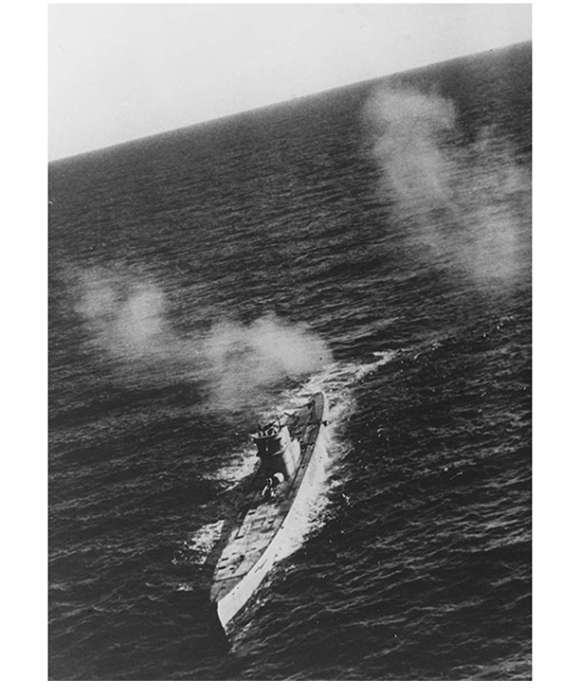
Forgotten Fights: USS Buckley Duels U-66
The Battle of the Atlantic was fought with some of the newest technologies, however, in one duel, creative sailors resorted to kitchenware in an effort to fend off boarding enemy sailors.
Ed Lengel, PhD
Edward G. Lengel is the former Senior Director of Programs for the National WWII Museum’s Institute for the Study of War and Democracy.
Cite this article:
MLA Citation:
APA Citation:
Chicago Style Citation:
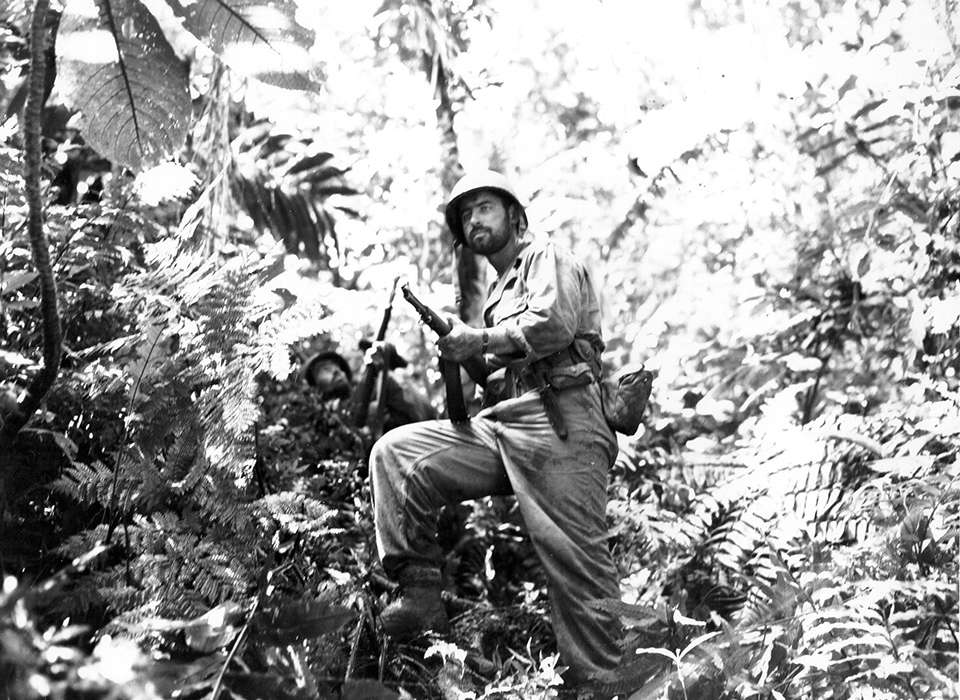
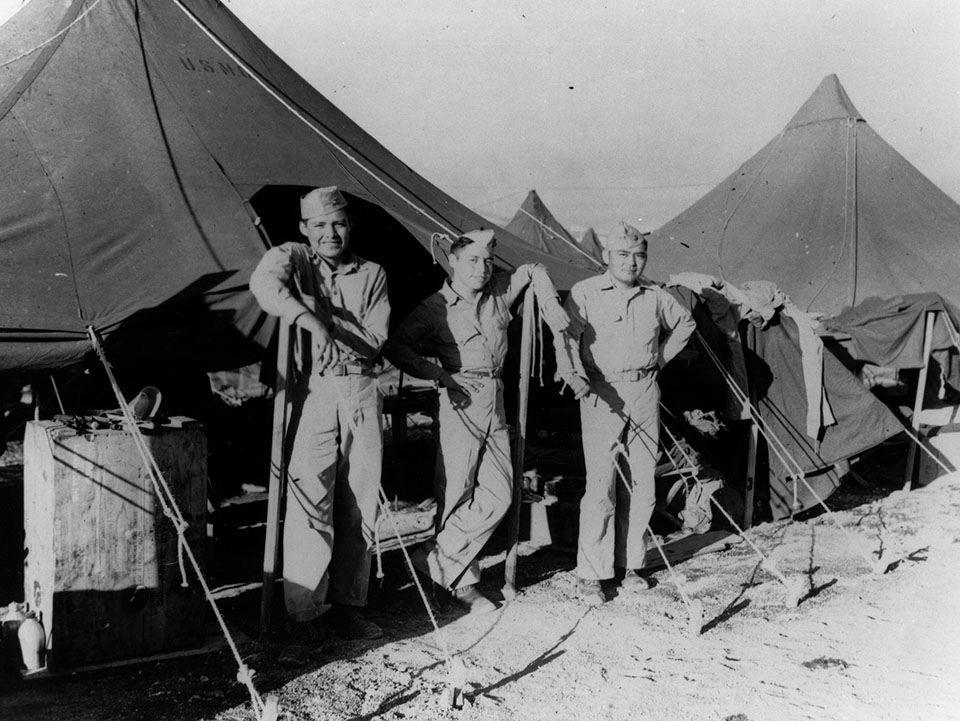
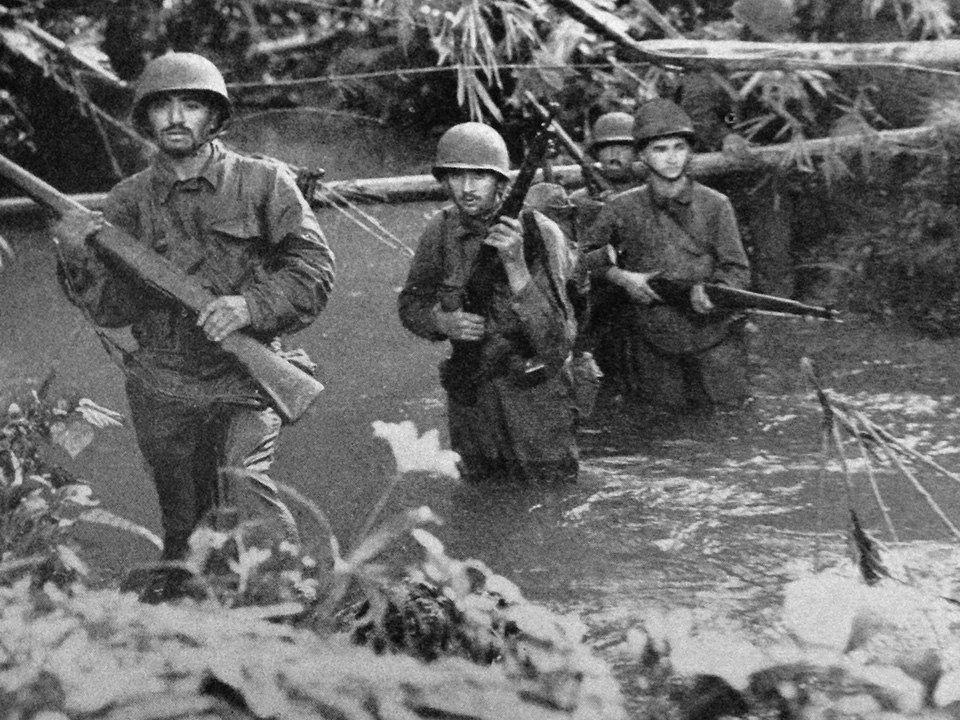
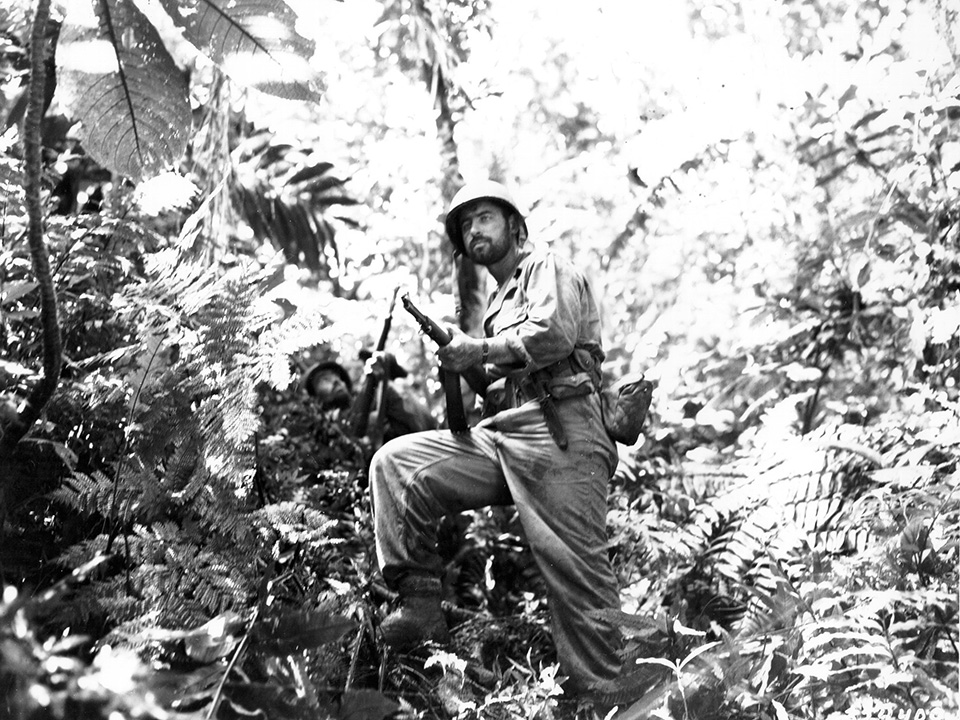
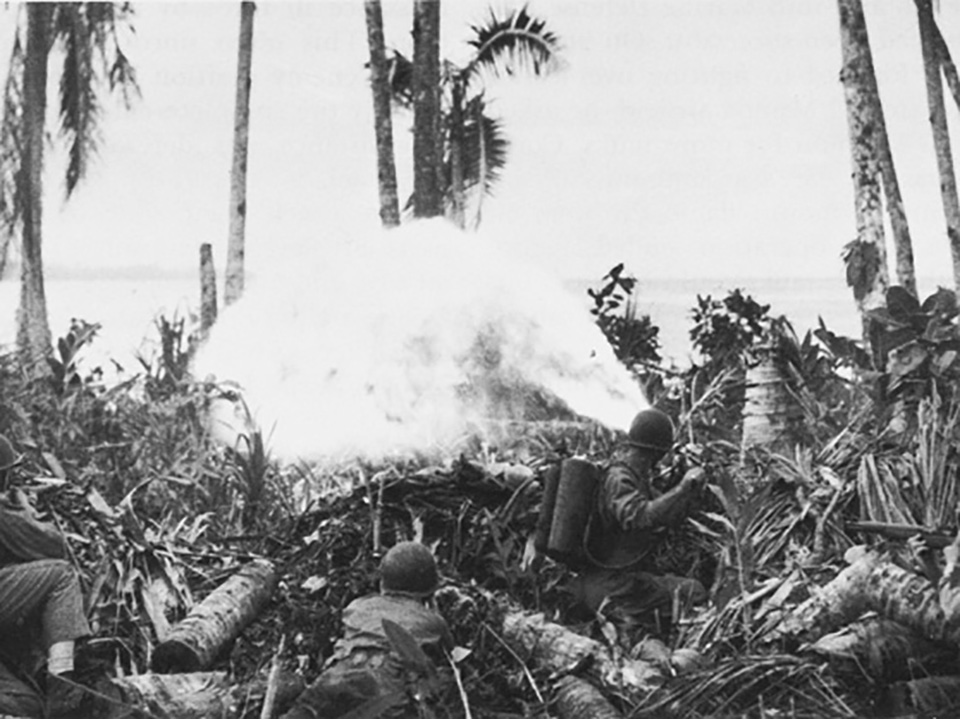
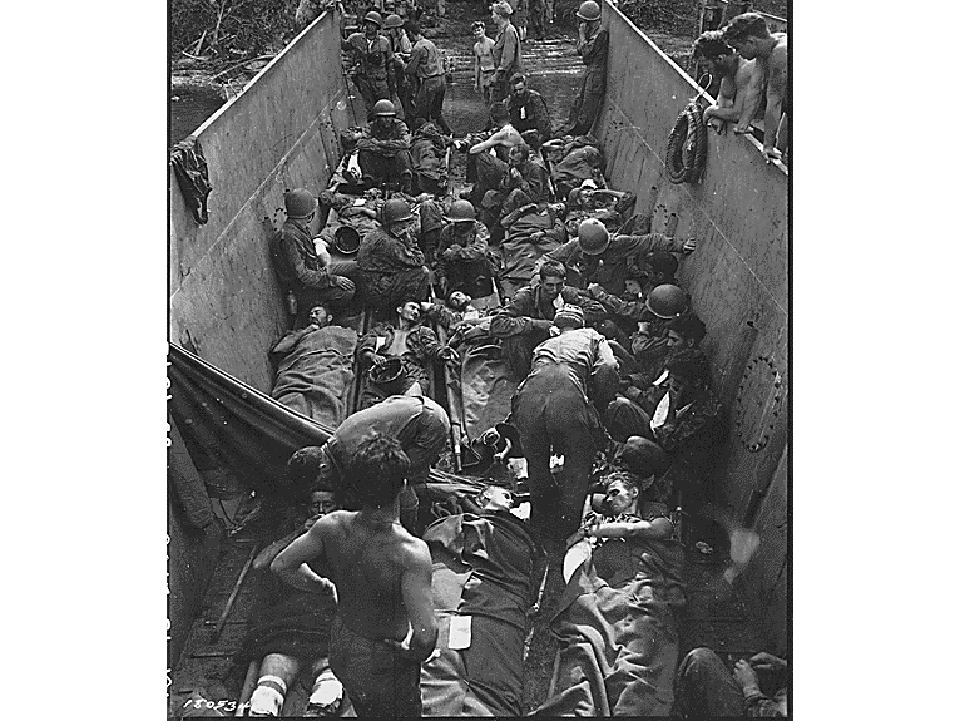






![Max Fuchs, New York City cantor, sings as Rabbi Sydney [sic] Lefkowitz, Richmond, VA, conducts the first Jewish services from Germany.](/sites/default/files/styles/max_650x650/public/2025-10/image1.jpg)

